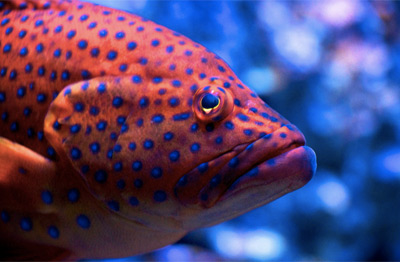Moving a marine fish from one tank to another is a straightforward process. You grab a fish net of appropriate size, scoop out the specimen, and release it in its new home. At most, you might have to work with two nets, using the second net to gently herd the fish into the first. Easy peasy, right?
Ah, but don’t reach for that ubiquitous green net just yet! For some fish, transfer by net isn’t an ideal alternative. Here are five fish types that are best moved using different means:
Type 1: Spiny/spiky and venomous
Fish sporting venomous spines, such as lionfishes, scorpionfishes, and rabbitfishes, should never be transferred by net for two very good reasons. One, that flimsy mesh is no match for those sharp spines, so they can easily poke through and possibly penetrate your skin. Two, if the spines get entangled in the net and the specimen begins to thrash about, the spines can easily be broken or torn from the fish.
Rather than being netted, these types of fish should be transferred using a suitably sized rigid container (such as these food containers).
Type 2: Spiny/spiky but nonvenomous
As we all know, it’s not just the venomous types that have spines or spikes that can become entangled in nets with potentially injurious results, either to the fish themselves or to their owner. Examples include the various angelfishes with their backward curving opercular spines, the similarly equipped maroon clownfish (Premnas biaculeatus), and tangs/surgeonfishes with their scalpel-like caudal spines.
Transfer using a rigid container as with type 1.
Type 3: Puffers of all kinds
A puffer that is netted and lifted out of the water may inflate its body with air and then have difficulty expelling the air afterward, potentially with fatal consequences. Some puffers, such as Diodon holocanthus, also have spines all over their bodies that stand erect when they inflate, so they fit in the second category as well.
Transfer puffers using a rigid container as with types 1 and 2.
Type 4: Slippery, slimy characters
The various moray eels come to mind here. Not only are they excellent escape artists, but they also produce copious amounts of slime, making them quite slippery. Thus, netted specimens can all too easily wriggle right out of the net and onto the floor.
The best technique for moving morays is to capture them in a heavy-duty plastic bag (with water, of course), which usually requires removing everything else in the tank and significantly lowering the water level in the tank ahead of time.
Type 5: Big bruisers
Some fish, for example certain groupers, may be too big, boisterous, and heavy to be transferred safely and effectively from one tank to another using a fish net. When moving tankbusters, a better option is to lower the water level in the tank, remove any rocks/décor, and either herd them into a large, heavy-duty fish bag or rigid container (such as a bucket) or actually move the fish by hand using a wet towel to cover/calm the fish. Of course, if the tankbuster also happens to be equipped with sharp teeth, the latter method may not be your best option.



